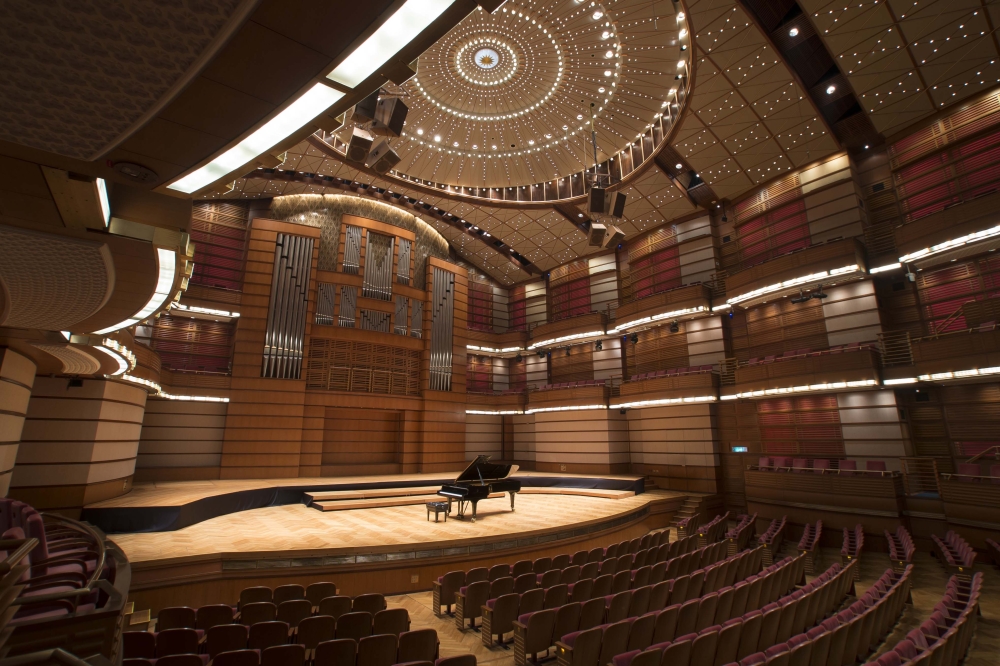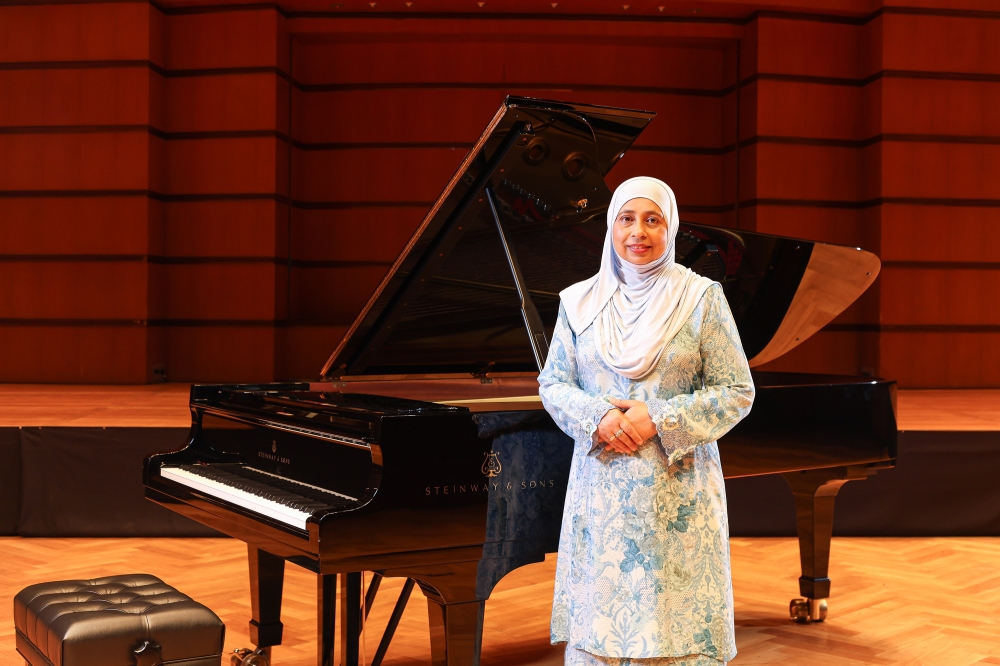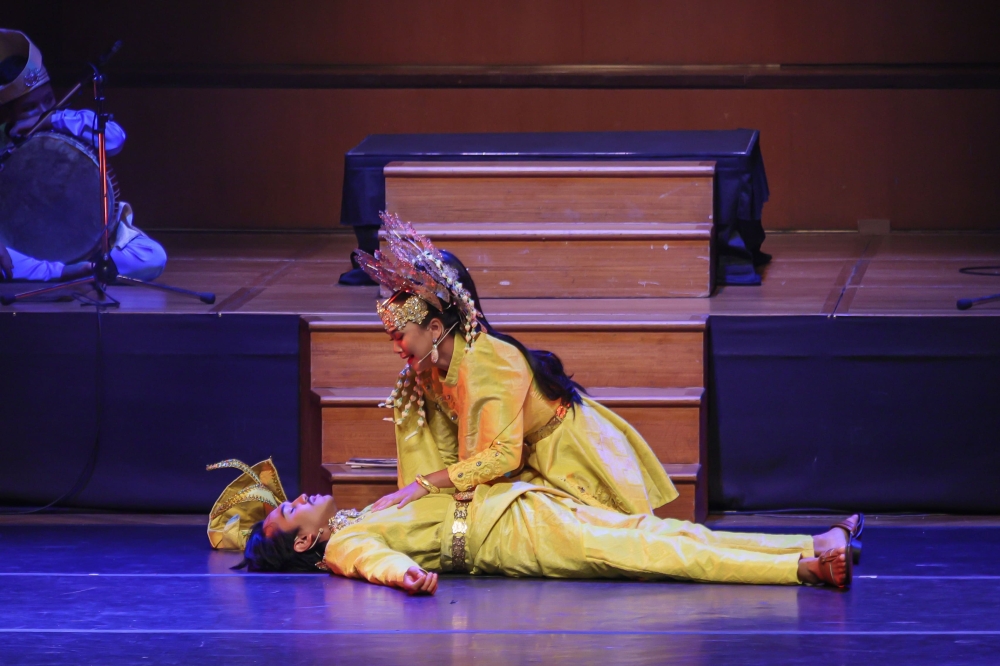KUALA LUMPUR, Nov 3 — If you had to name a gold standard concert hall in Malaysia, the Dewan Filharmonik Petronas (DFP) would most probably be the first name of choice.
The first concert hall in the country dedicated to classical music opened its doors officially on August 17, 1998, just about two years after the completion of the iconic Petronas Twin Towers.
While thousands were involved in building the DFP, three prominent Malaysians stood out in pushing for its completion: then prime minister Tun Dr Mahathir Mohamad who was also Malaysian Philharmonic Orchestra (MPO) patron, his wife Tun Dr Hasmah Mohd Ali, and then Petronas chairman the late Tun Azizan Zainul Abidin.
Fast forward 26 years and the DFP still maintains its prestigious status although its previous focus on exclusivity are now being substituted by inclusivity, especially after the Covid-19 pandemic which led it to revise its operations.
This is Dewan Filharmonik Petronas (DFP)
The DFP was designed by distinguished Argentine-American architect Cesar Pelli, who also worked on the Petronas Twin Towers, taking inspiration from the traditional shoe-box shape of the great 19th century European concert halls, with the Klais Pipe Organ serving as backdrop which has a total of 2,977 pipes with heights ranging from just over an inch to a towering 32ft.
The organ facade is inspired by the angklung, a traditional South-east Asian musical instrument.
The hall seats 920 people at one time which includes corporate suites, box seats and a royal suite.
Built with a plunger ceiling, the absorptive wall panels and sound-reflecting ceilings and balconies was designed by acoustic expert Kirkegaard & Associates.
It is equipped with a big audio-visual screen, projected from a follow-spot control room with a measurement of 27 feet x 15 feet made for film previews, product launches and data projection.
When it comes to sound systems, DFP has a top-notch recording studio and broadcasting facilities with 4K capabilities and the DFP studio was designed by Abbey Road Studios of EMI Group UK which is equipped with the latest digital recording equipment including the DigiCo SD7 desk.
DFP has hosted a slew of superstars including world renowned orchestras such as the New York Philharmonic and the BBC Symphony as well as international artists such as Harry Connick Jr and Diana Krall, as well as local legends such as Datuk Sheila Majid and Datuk Seri Siti Nurhaliza.

Back to the drawing board
MPO and DFP chief executive officer, Hassina Begam Abdul Gani told Malay Mail that following the Covid-19 pandemic in 2020, they had to go back to their drawing board in order to maximise efficiency involving not just the orchestra but the venue as well.
Among the steps taken by Hassina and her team was to lower the rental hall price and use the DFP for more non-musical events such as corporate events, launches and even town hall programmes.
She said that the RM118,000 price tag for the hall before Covid-19 was too expensive and it did not bode well with their mission of making DFP inclusive to the public.
“The hall is still the home of MPO and it was also built for Malaysians, not just for a certain group of people but for everybody.
“Pre Covid-19 we were charging RM118,000 for a day but now, we have cut it to half the price of only RM64,000.
“Because I think we have to be realistic, if we want people to come and do shows here, it must be commercially viable as well,” she said.

Apart from the option of renting out the DFP for a day, tailored services are provided according to events such as hourly rentals of the hall and foyer, lighting, sound equipment and musicians as well.
Since implementing these new approaches in 2022, DFP has seen an increase in demand, especially this year. Hassina was surprised that the DFP is fully booked throughout the fourth quarter of 2024.
“We are open to all, we want the DFP to be enjoyed by others and that’s why for the fourth quarter this year our hall is fully booked and it's not so much for concerts but events.
“Our problem now is to find the available dates to do our own shows. So it’s a good problem to have”.
Hassina shared that they are also bringing in more local cultural heritage performances at DFP as part of their goal to educate the public on traditional performing arts.
She said that they are slowly turning the DFP into a cultural hub and one of the ways is by bringing back their flagship programme this year which is the DFP Seni Festival series, which was last held in 2014.
The sixth edition of the DFP Seni Festival series was held from last July to September with Sanggar Seni serving as the finale of the three-month long traditional music and arts festival.

The programme included performances by Jit Sin High School’s Chinese Orchestra, theatrical groups like Mek Mulung’s Putera Cahaya Bulan, Randai Mudo Pak Belalang and Sanggar Seni, which served as the finale of the three-month long DFP Seni Festival 2024 festival.
Among the highlights of the two-day Sanggar Seni event included showcases of Malaysia’s traditional dances such as zapin, lion dance, kathakali and peacock dance, Orang Asli dances, exotic Borneo dances as well as traditional music from dikir barat to keroncong and ghazal.
Although having traditional performing arts and musicals at DFP is the perfect way to highlight the diverse culture of Malaysia to tourists — especially with DFP located at the base of the Petronas Twin Towers, one of the most visited places in KL — Hassina said that they are more keen on getting the younger generation of Malaysians to join first.
“Yes, tourists are also part of our focus but I think we should be focusing more on getting the locals first because we don’t want our younger generation to forget what we have.
“So this is for our children, for the next generation, we need to preserve that and DFP plays its role to provide a platform in keeping our arts heritage alive,” she said.






















